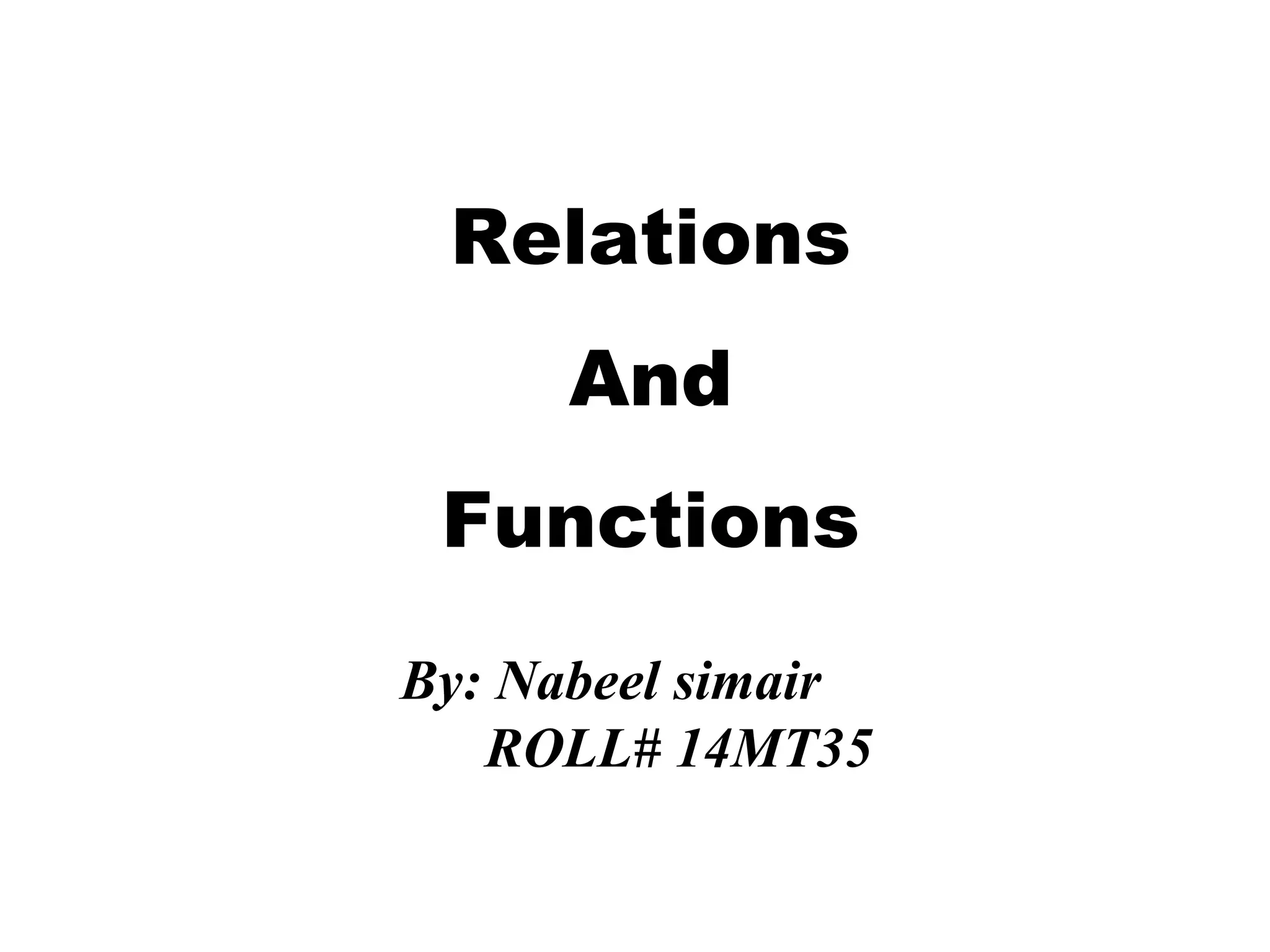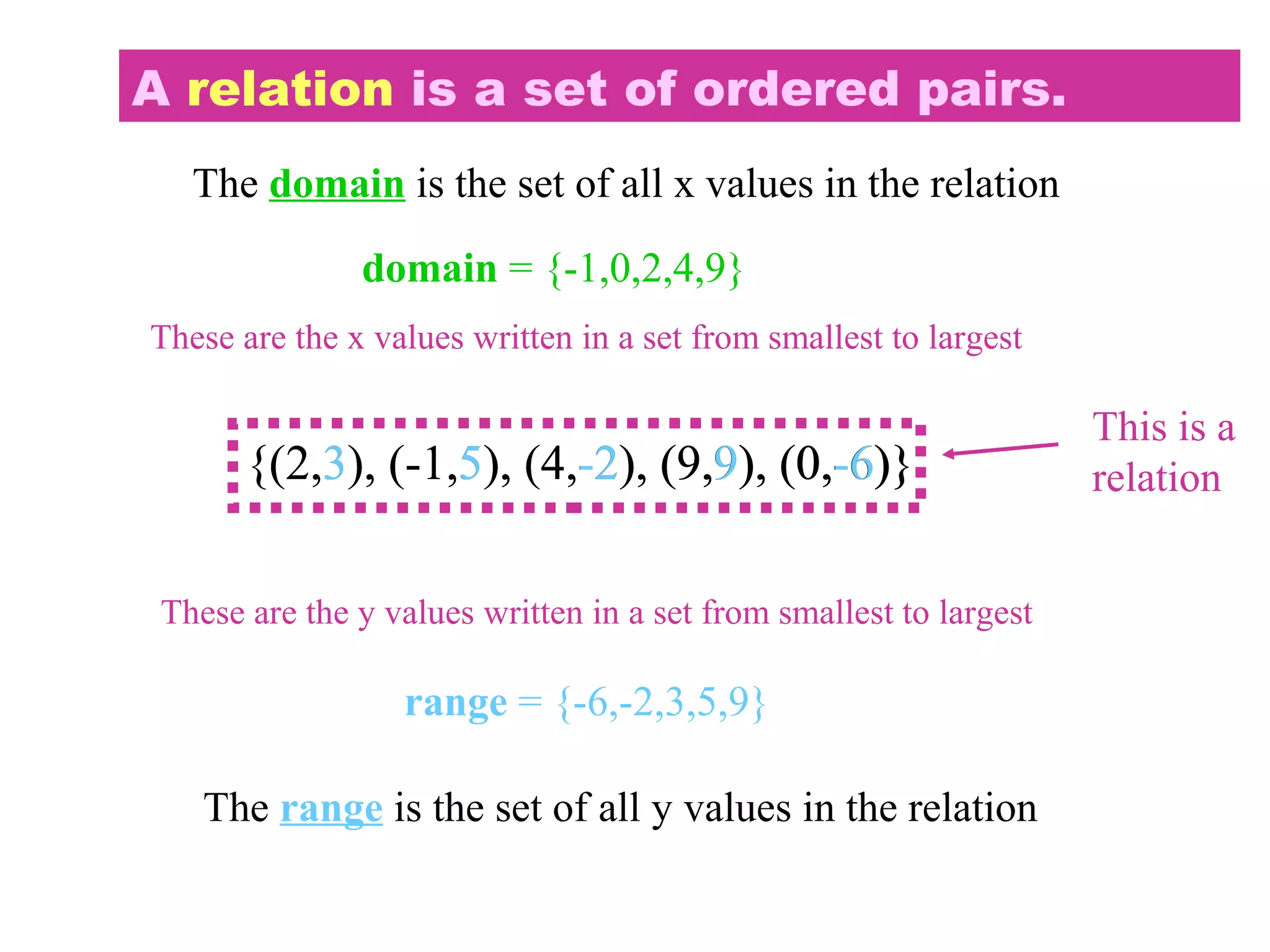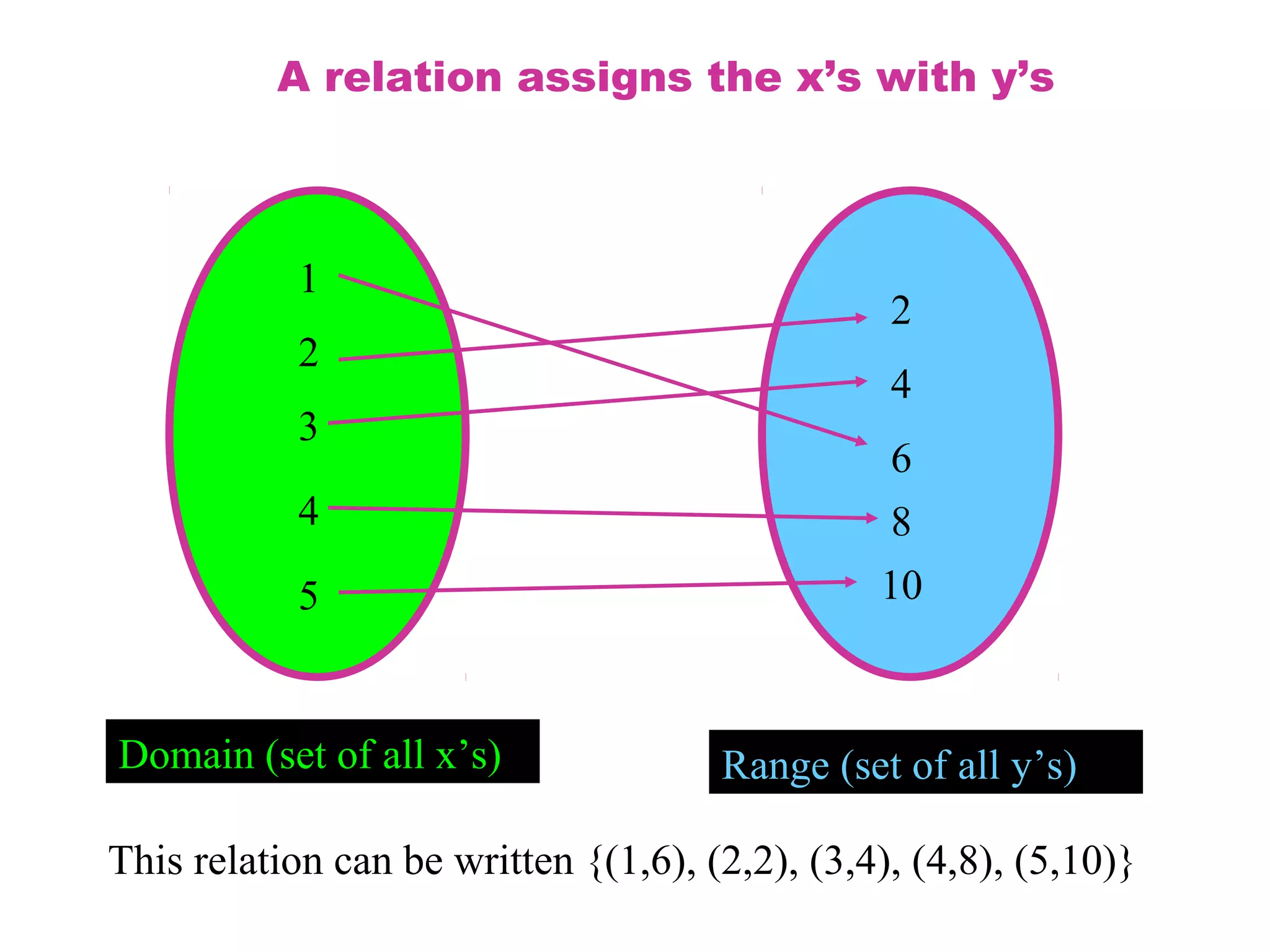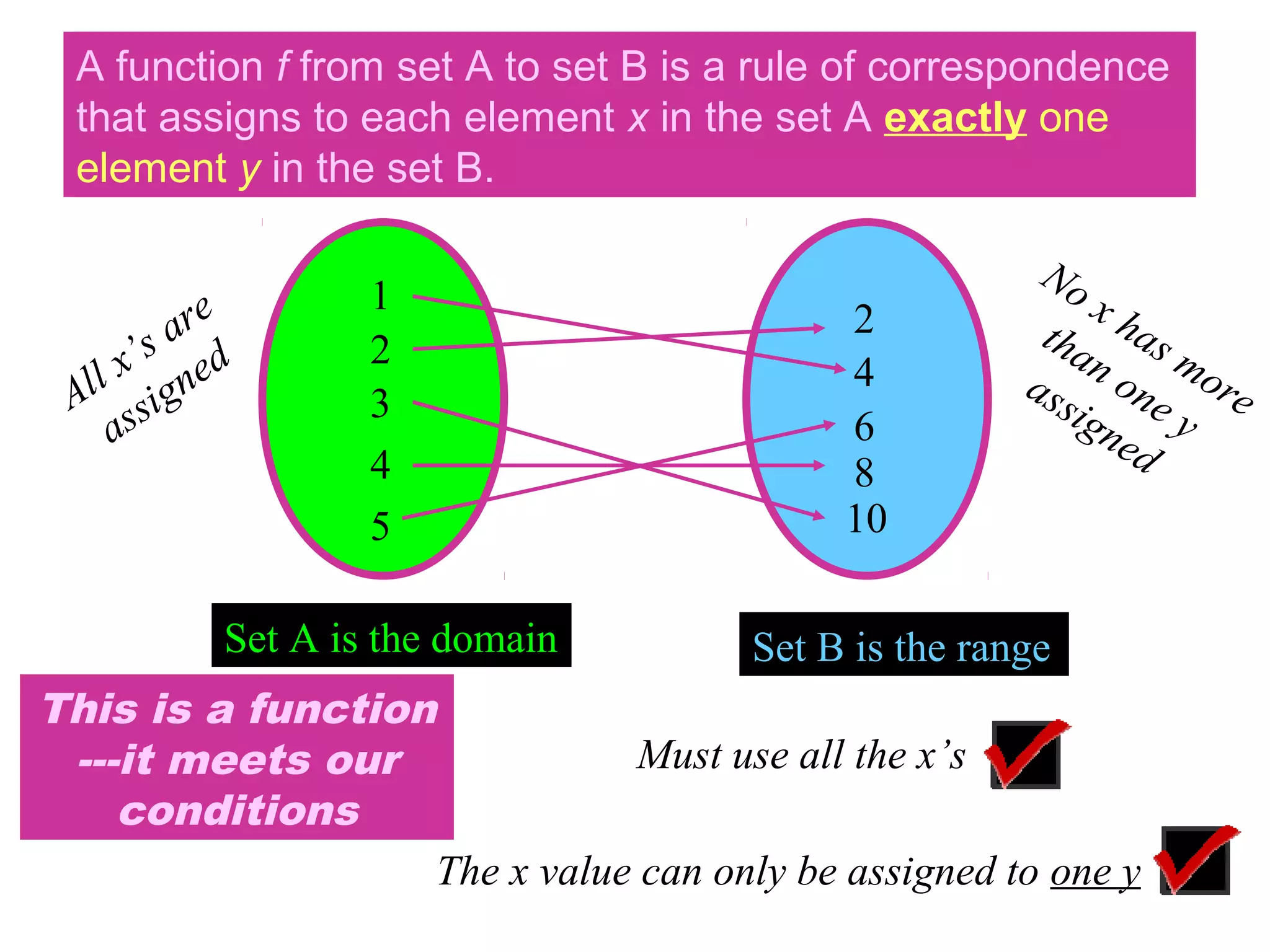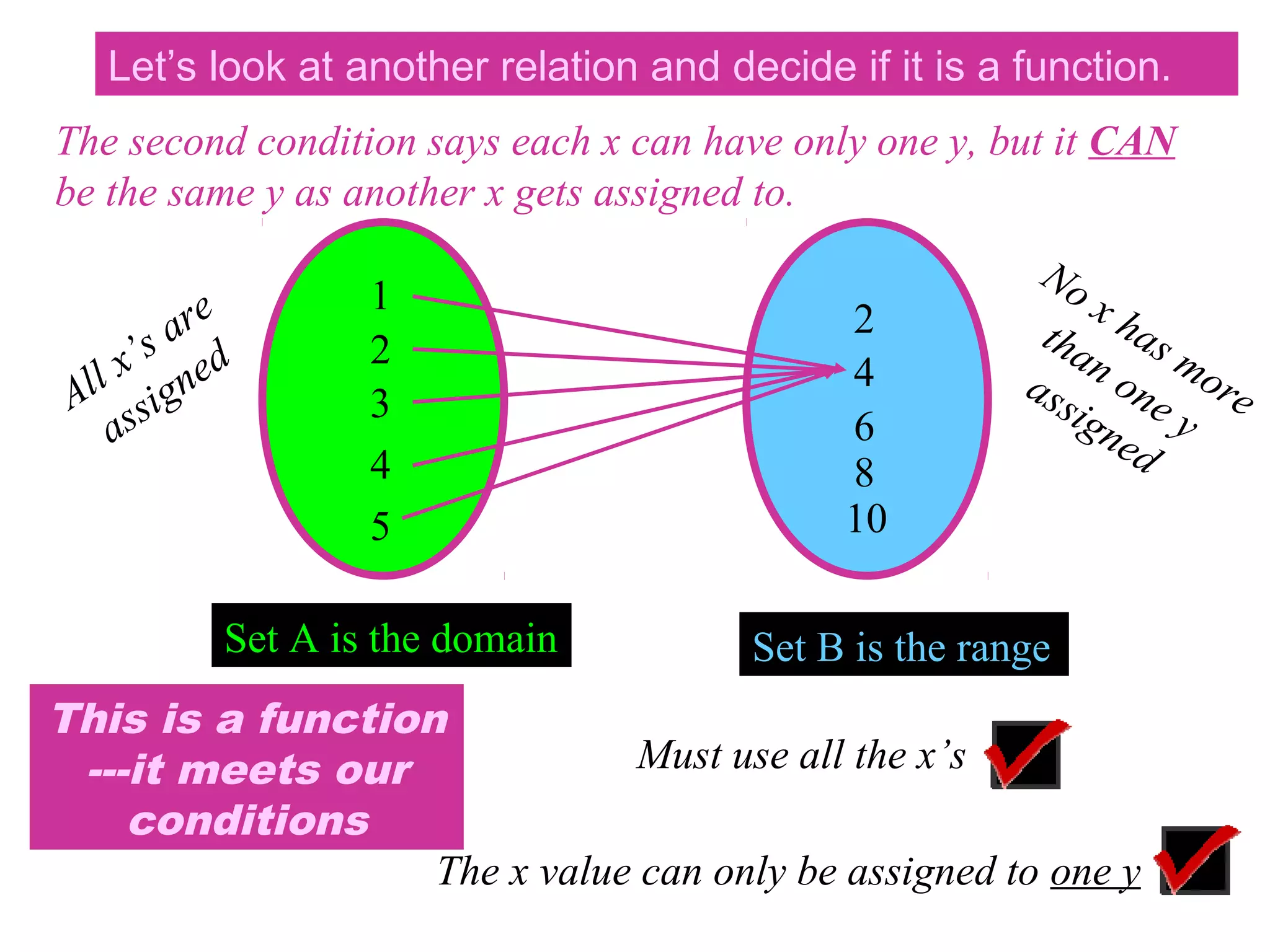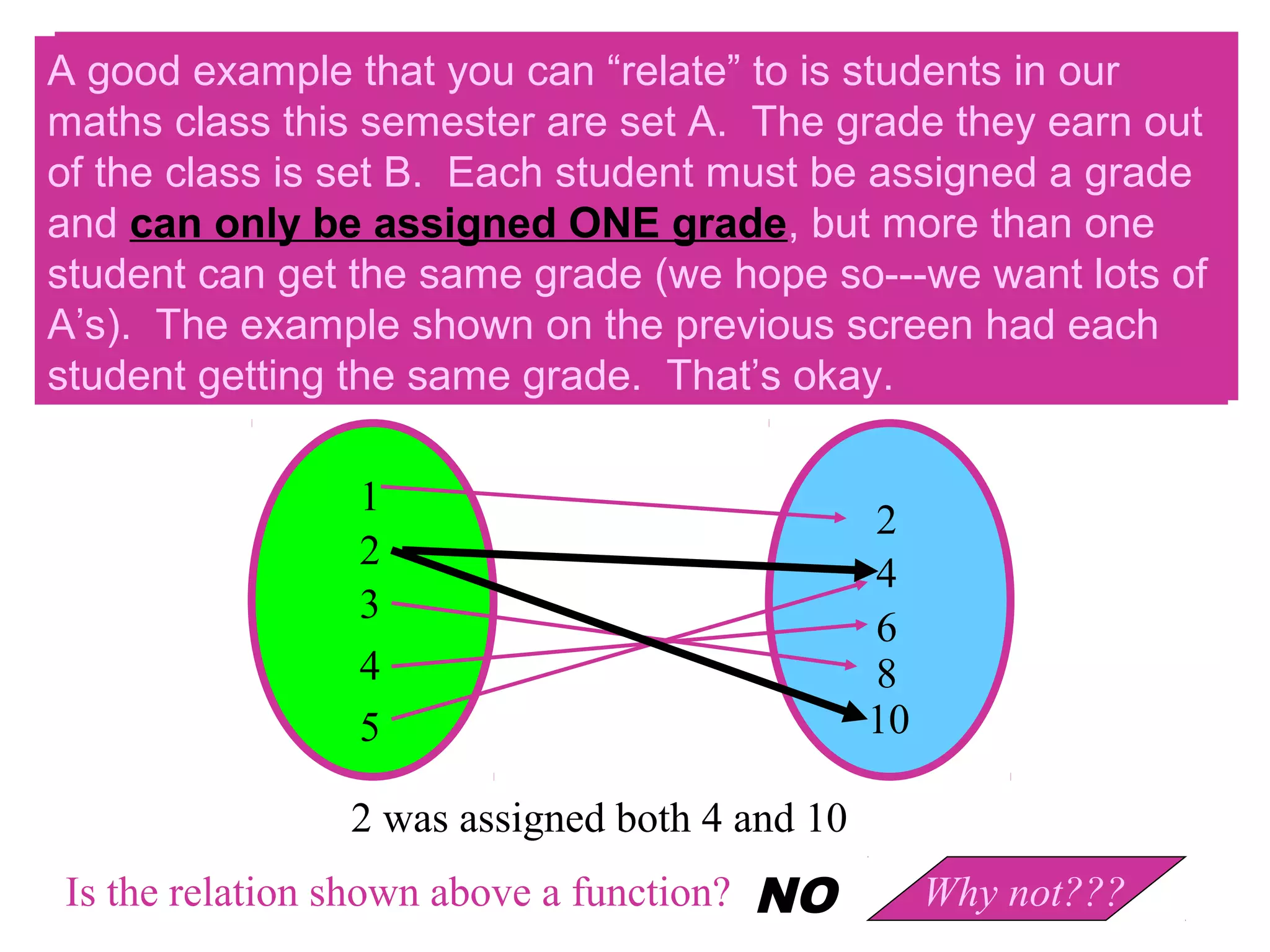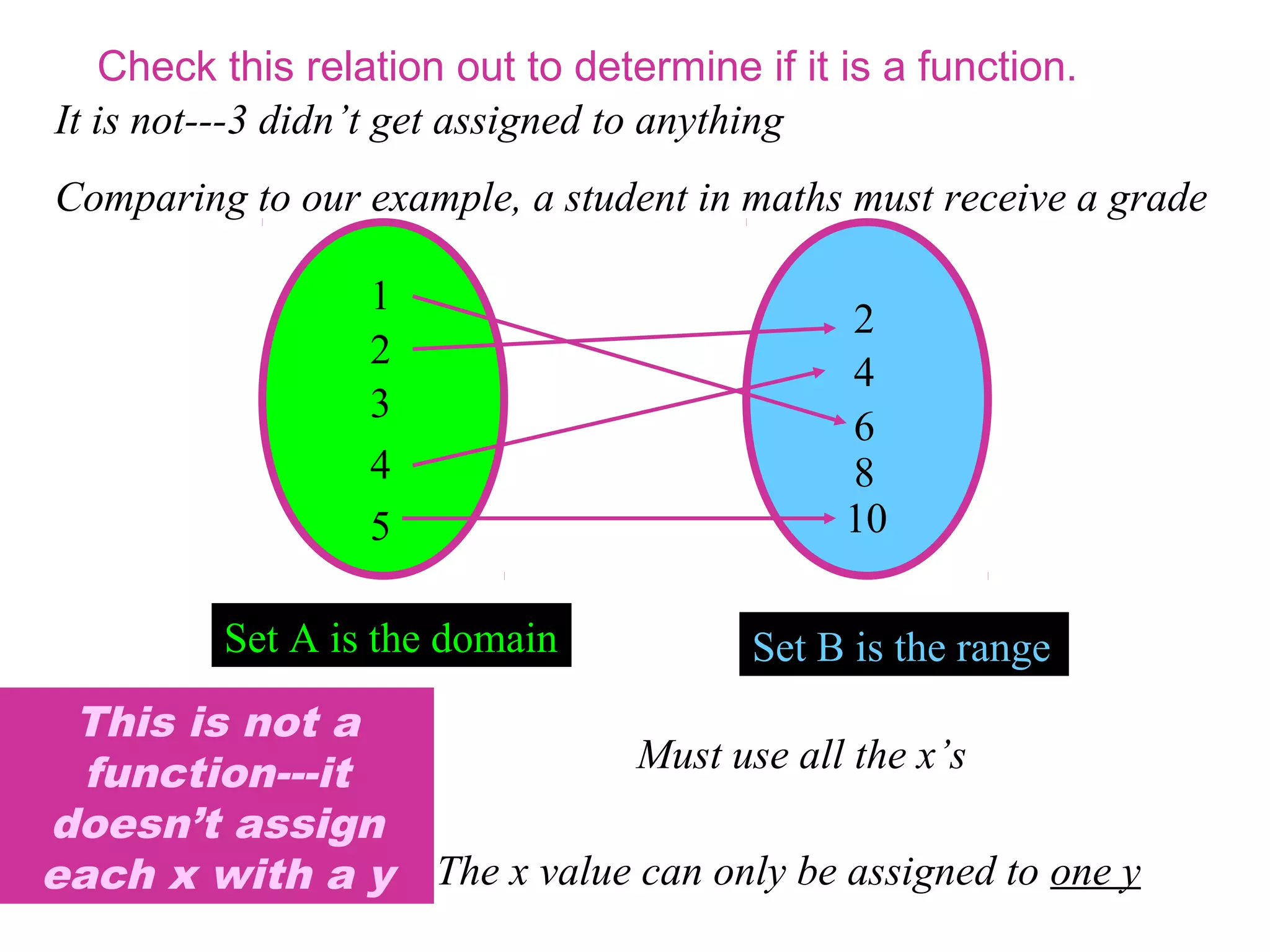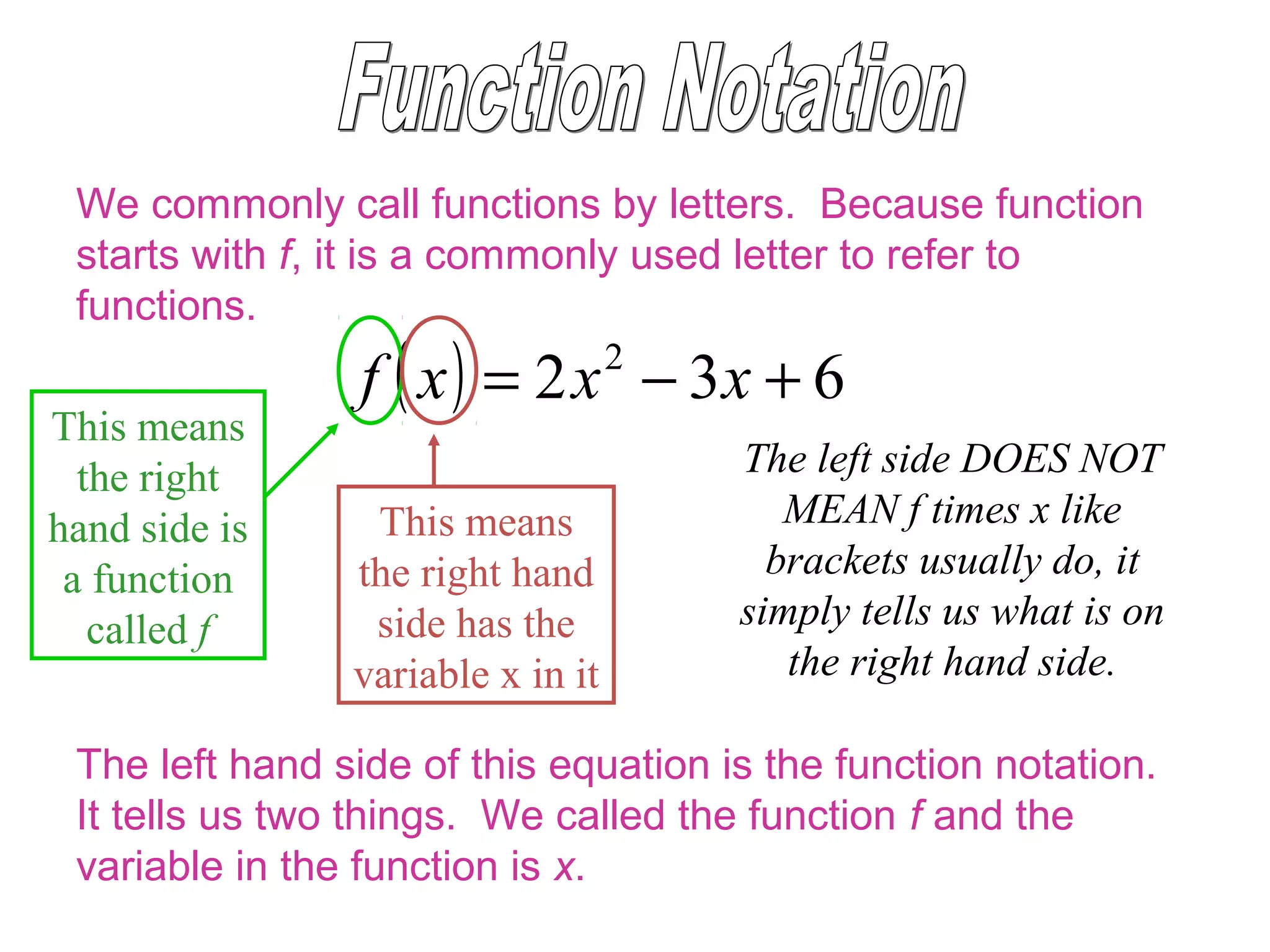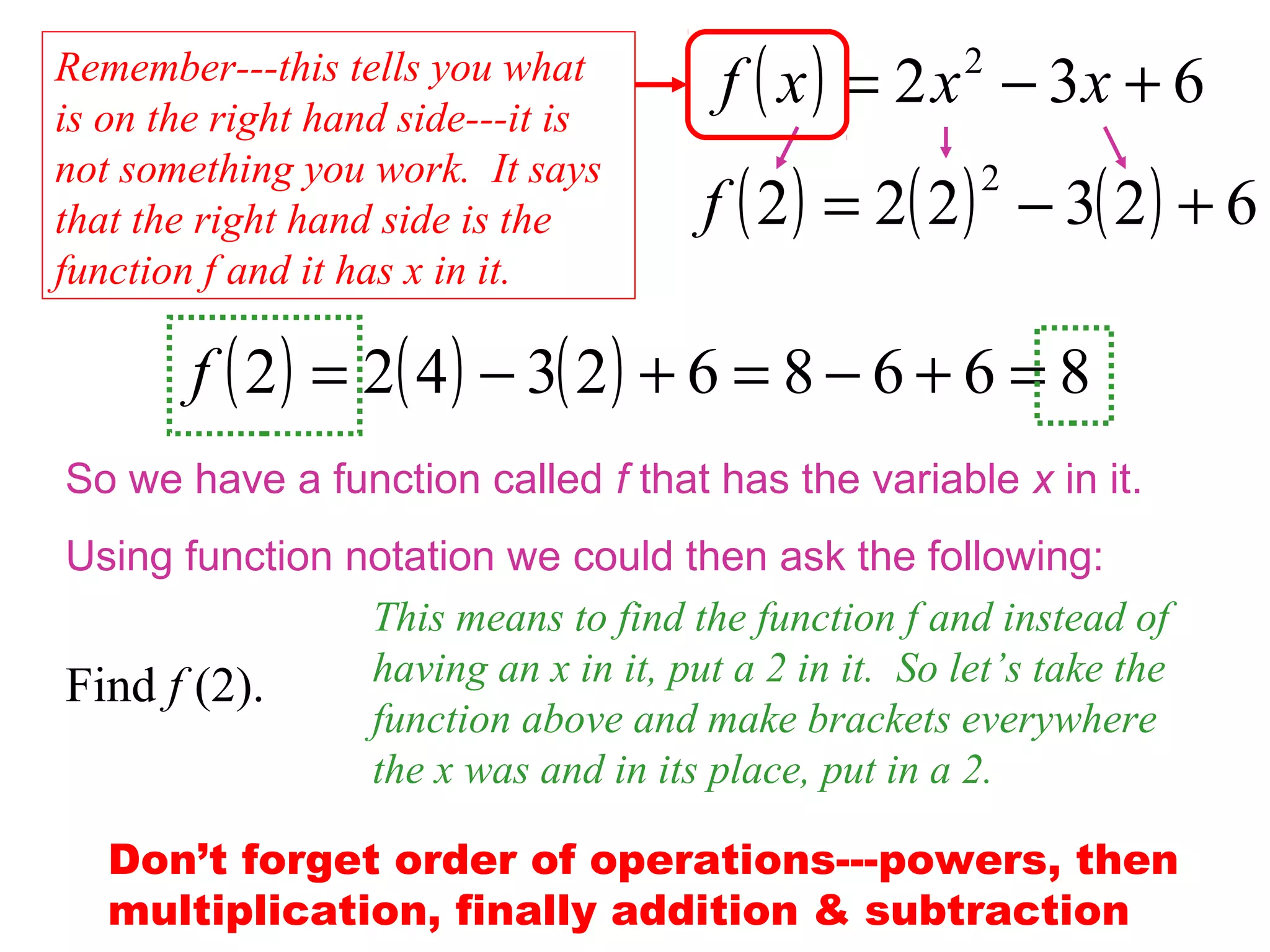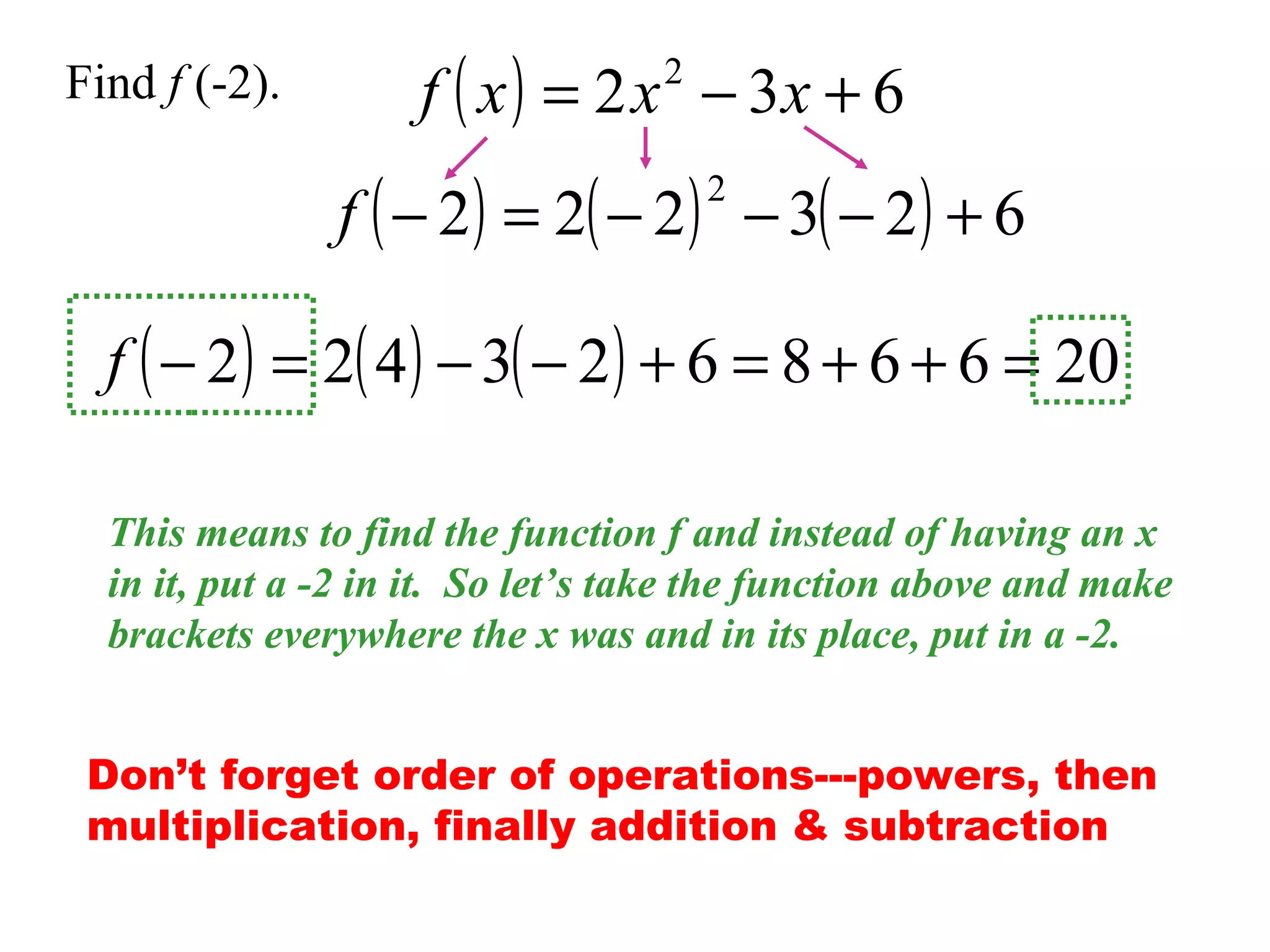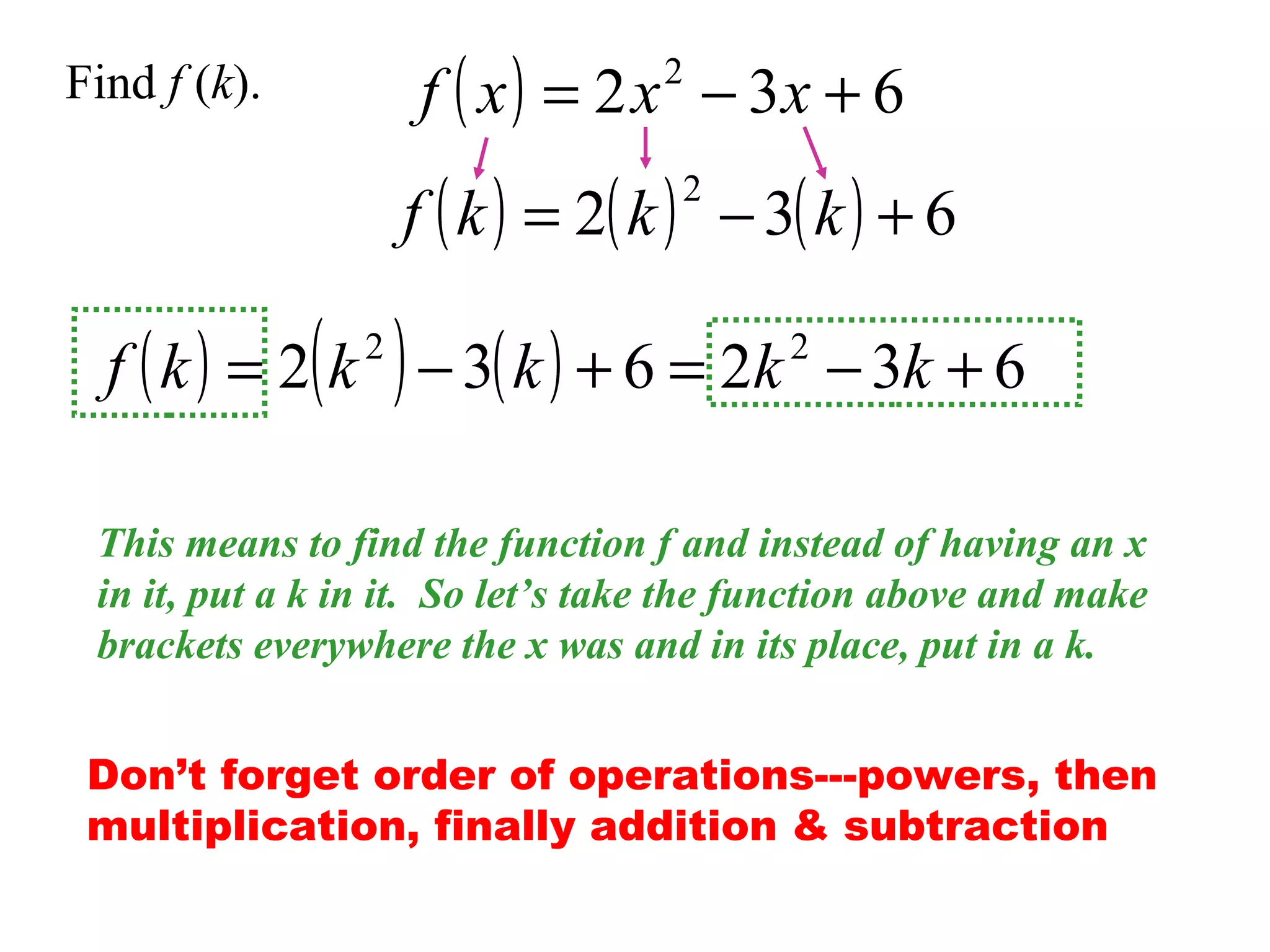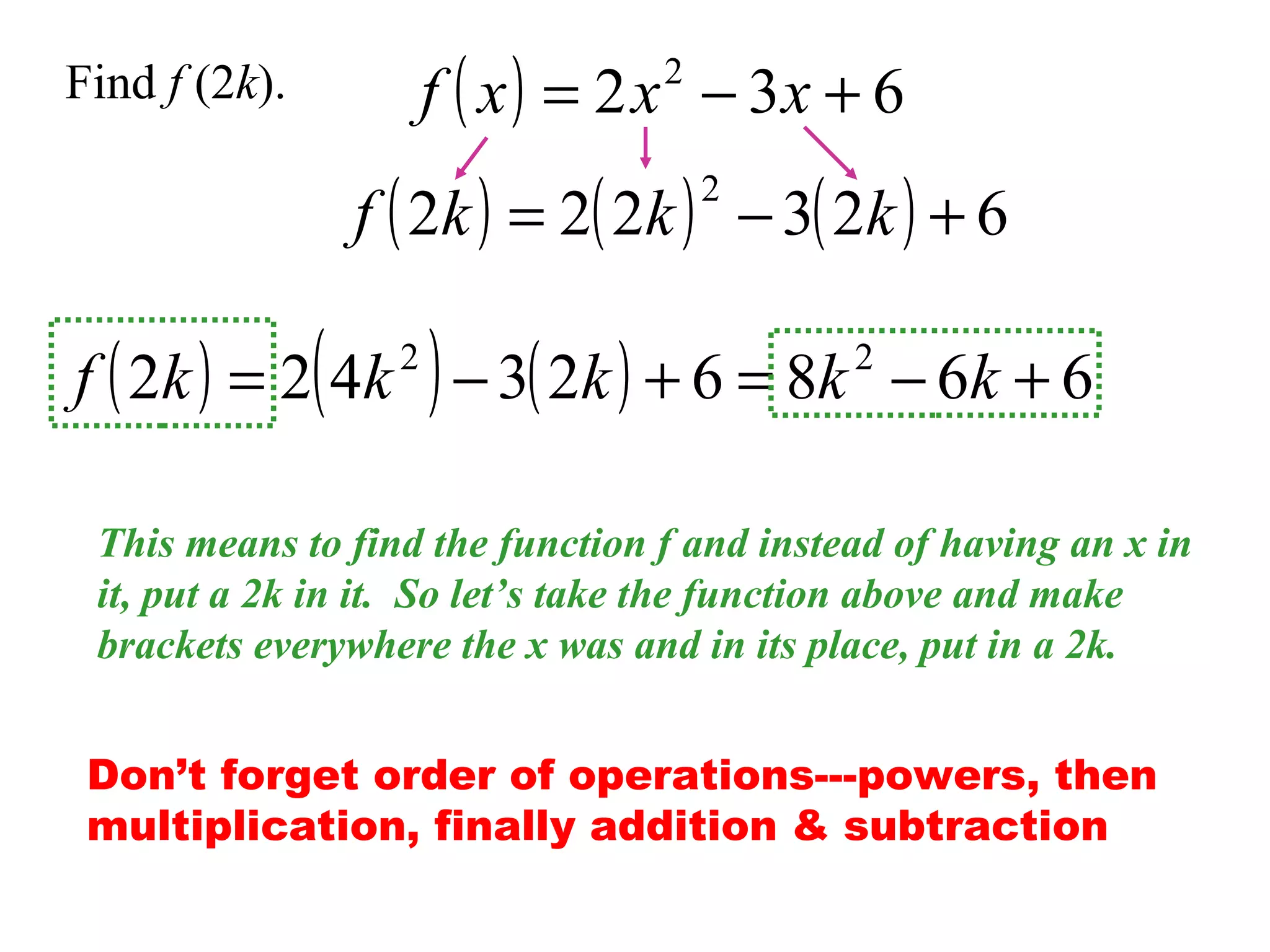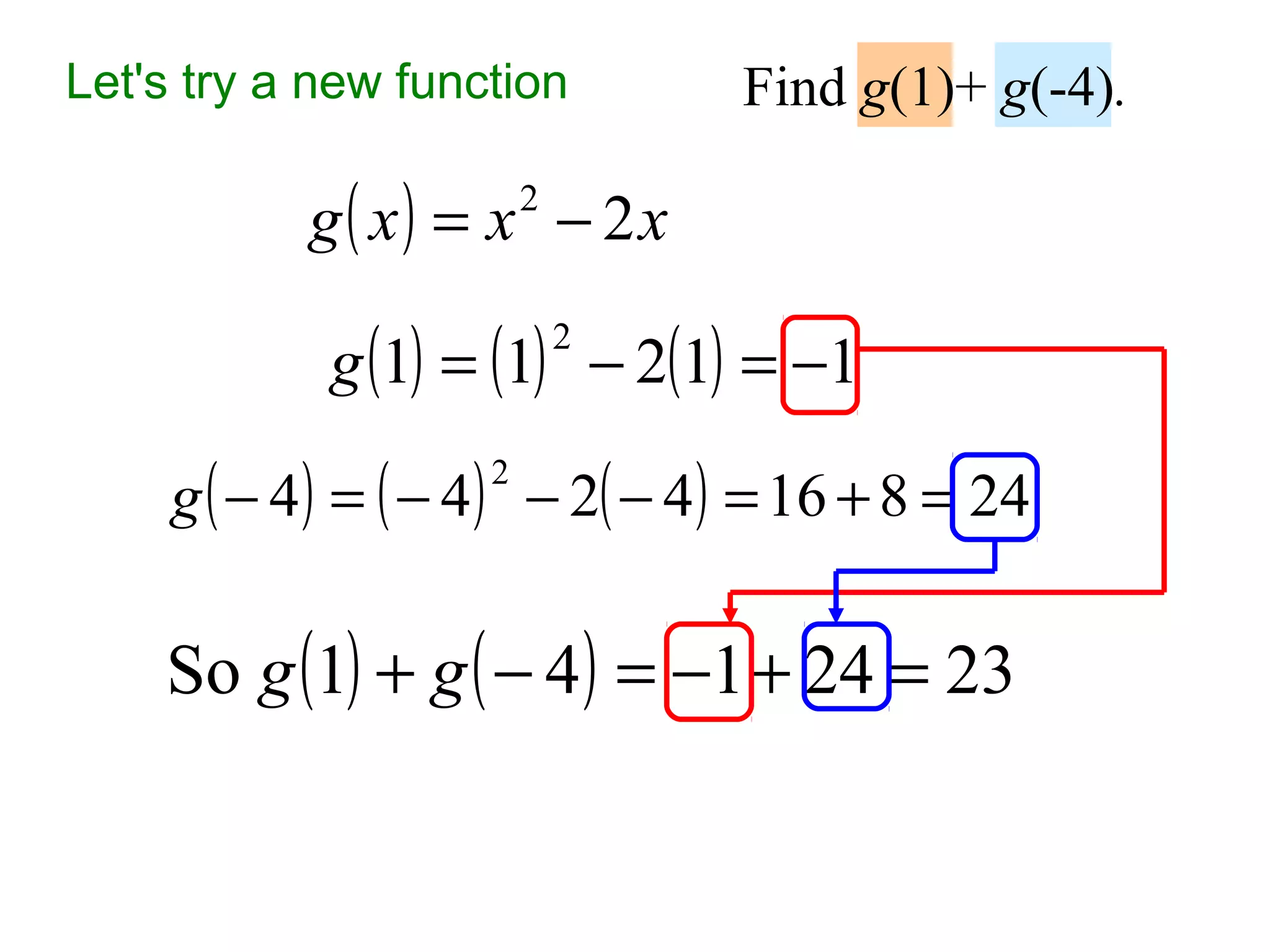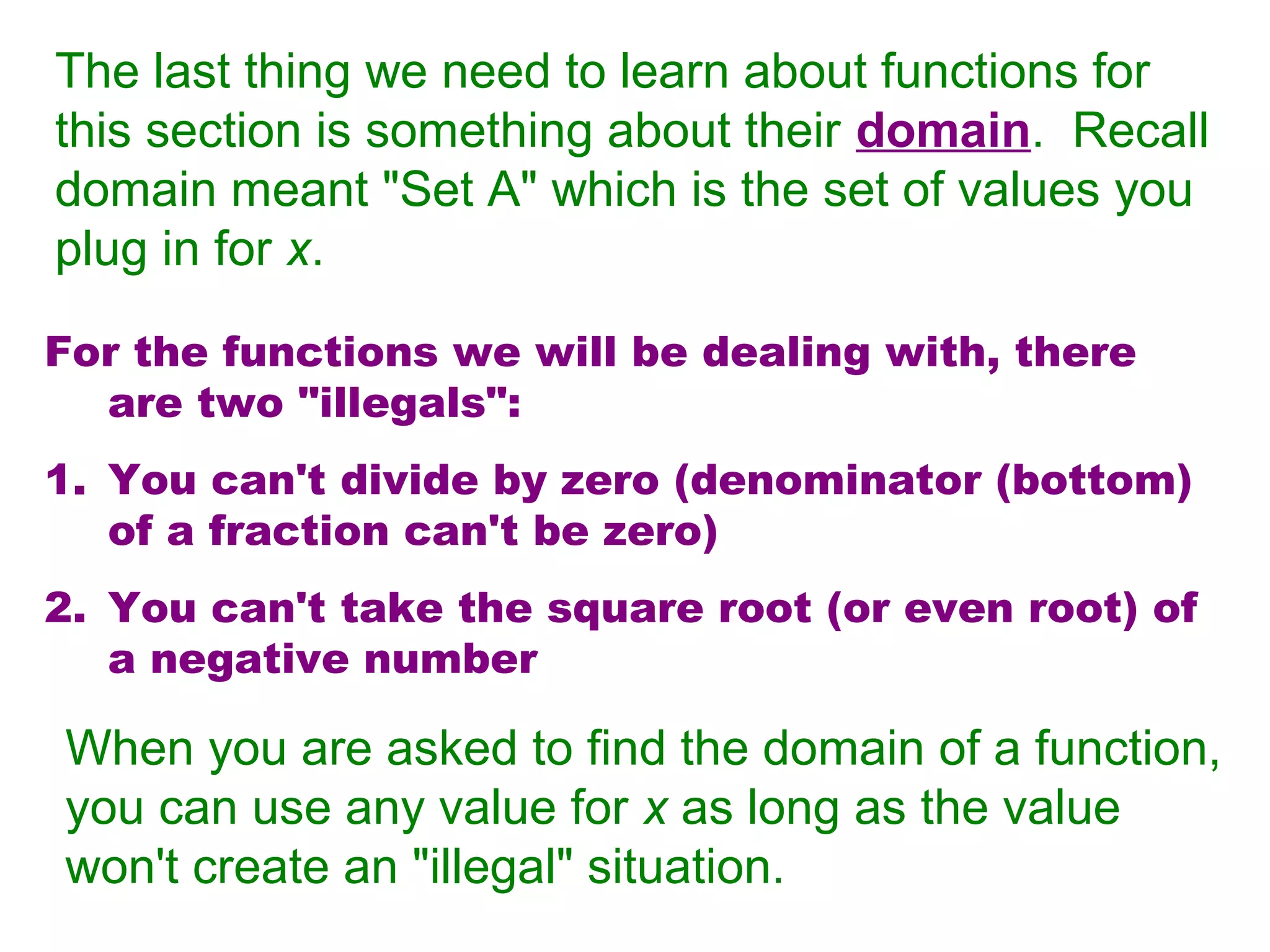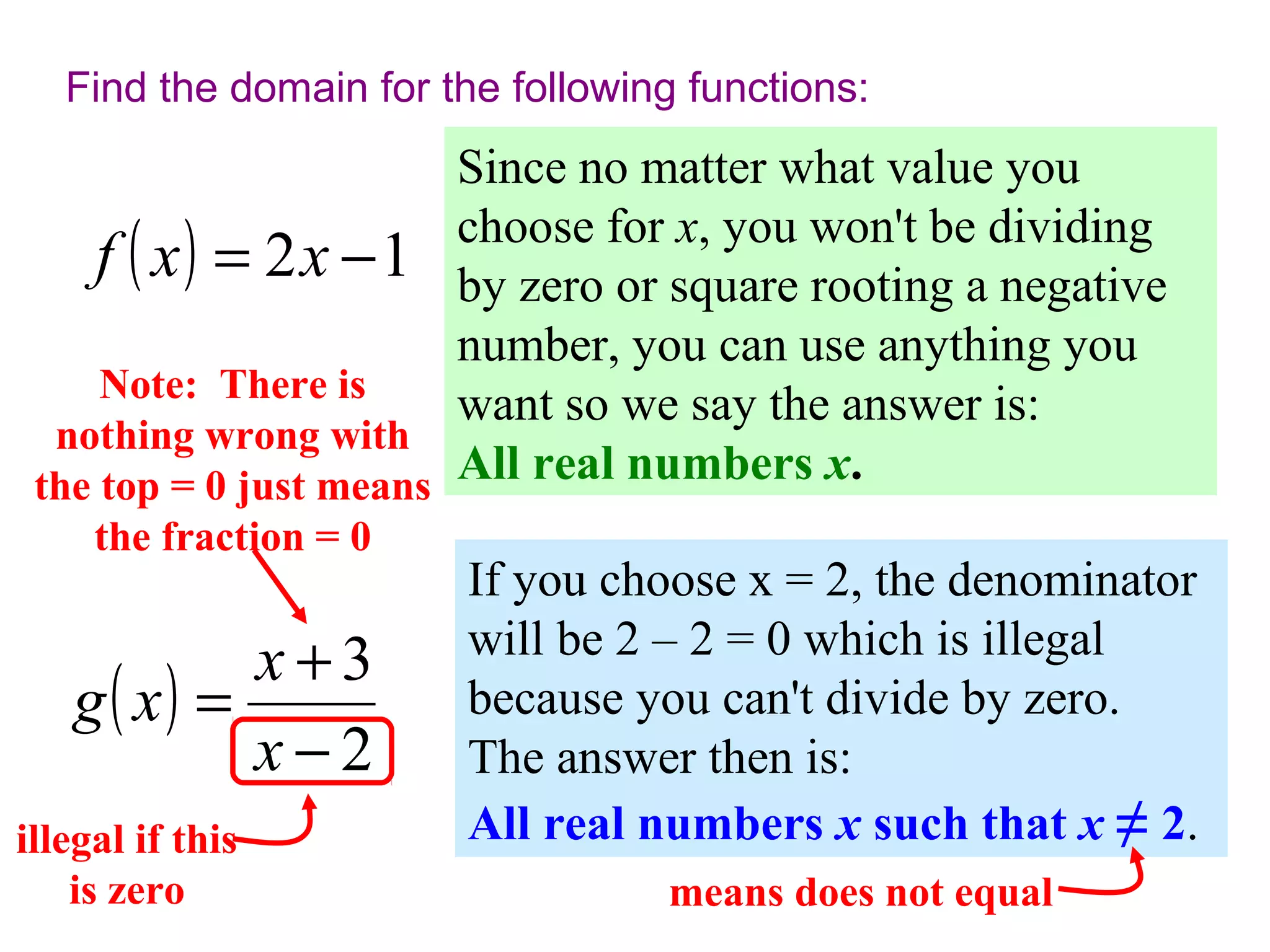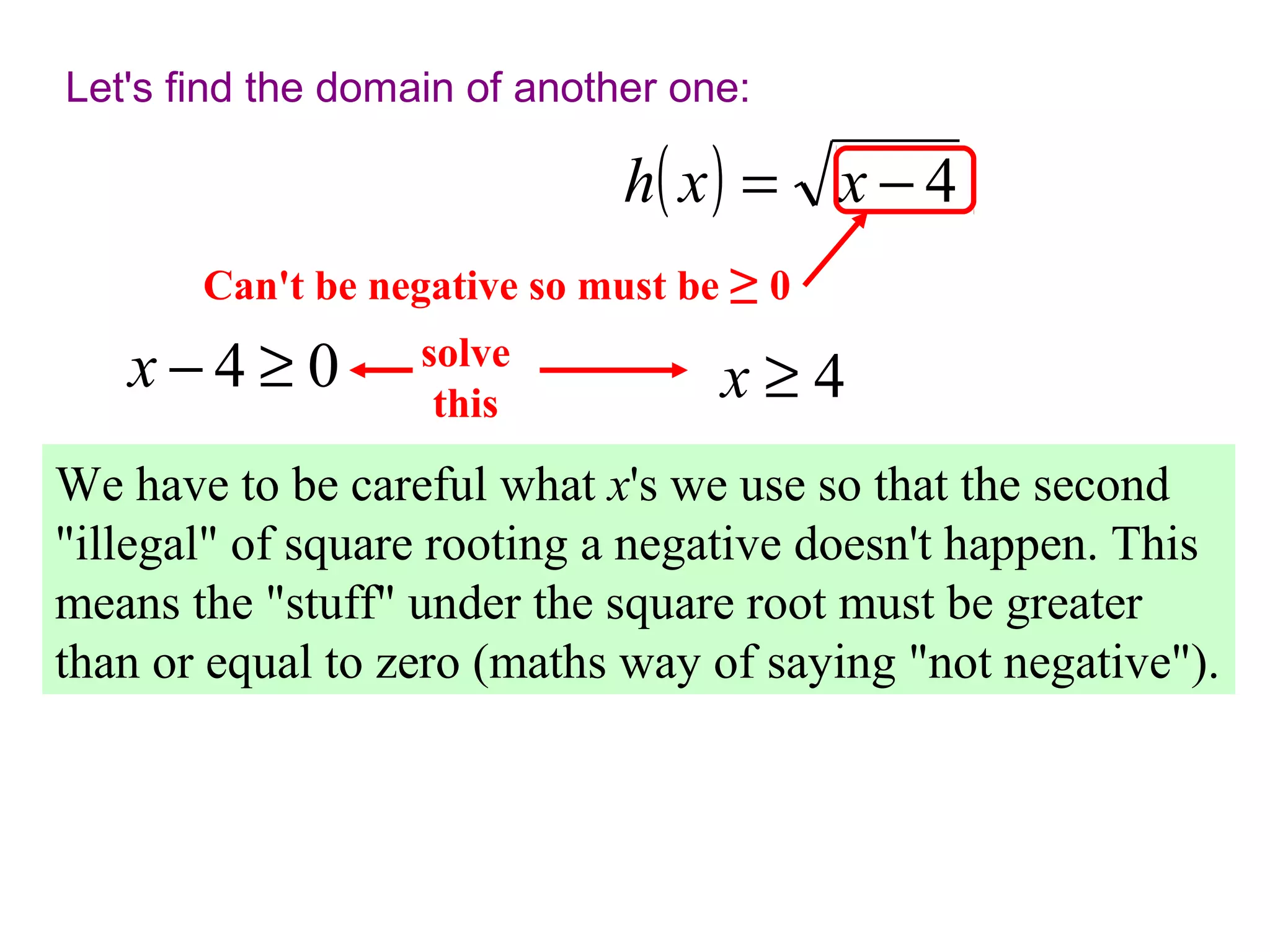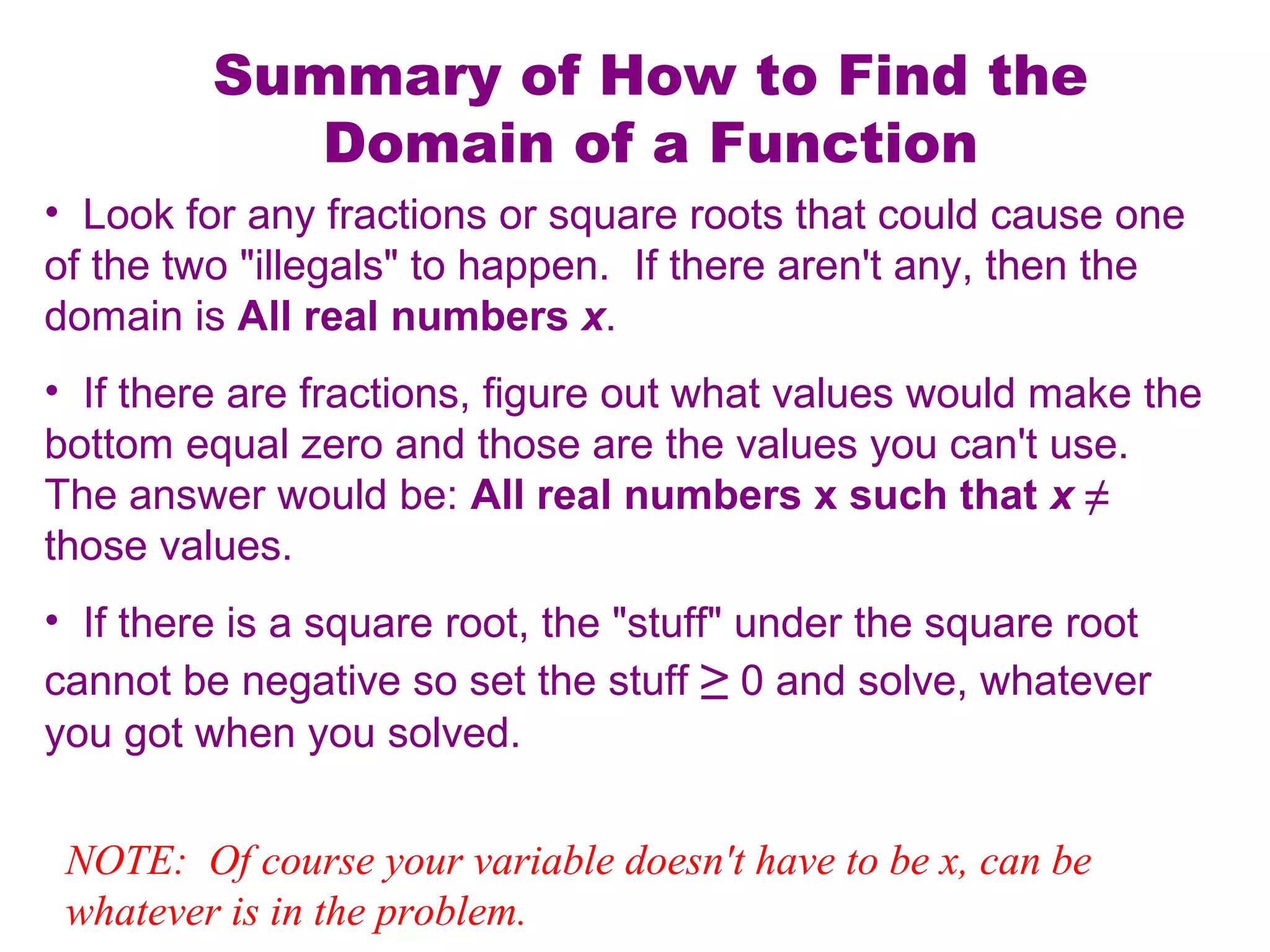The document discusses relations and functions. A relation is defined as a set of ordered pairs, with a domain (set of x-values) and range (set of y-values). A function is a special type of relation where each x-value is assigned to exactly one y-value. Examples of relations and functions are provided to illustrate the differences. Function notation is introduced, where f(x) represents the function f with variable x. The domain of a function is defined as the set of input values that do not result in illegal operations like division by zero or taking the square root of a negative number. Methods for finding the domain of a function are presented.
